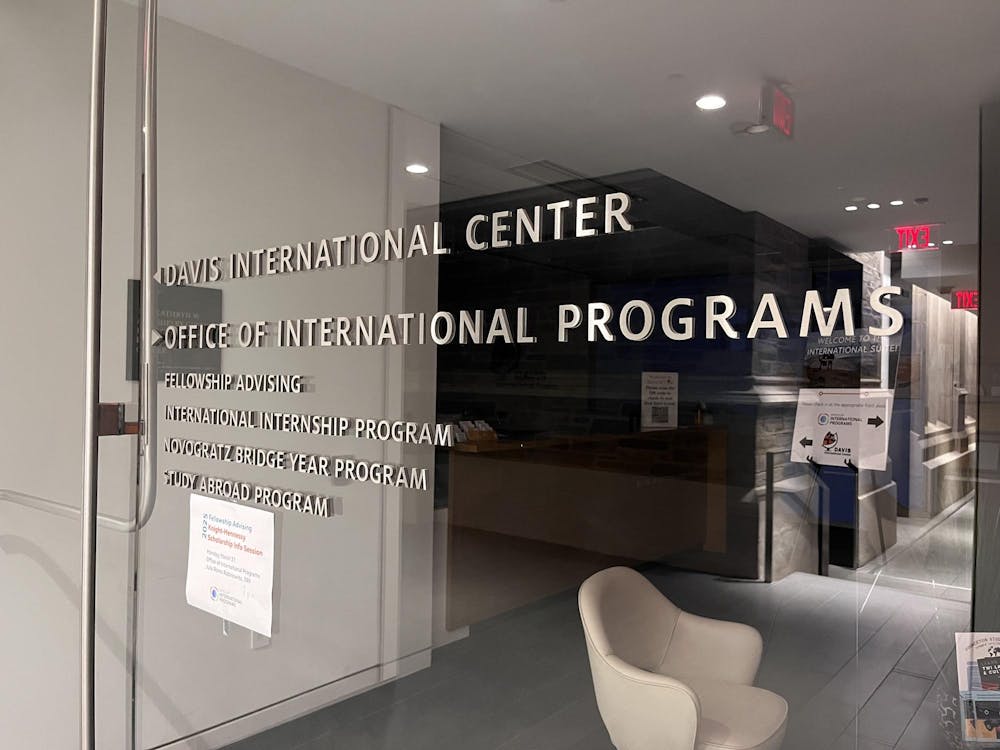The American medical system suffers from widespread instances of mediocre care, a problem that could be remedied by publicizing clinics' successes and failures, doctor and medical researcher Atul Gawande said in a lecture at McCosh 10 yesterday.
Gawande — a general and endocrine surgeon at Brigham and Women's Hospital — has gained a wide audience through his writings for magazines such as The New Yorker and Slate. His lecture, titled "Mediocrity and Its Causes: A Surgeon's Notes on Medical Performance," focused on the flaws of the medical system and ways to fix them.
A graduate of Stanford, Oxford and Harvard, Gawande received a 2006 MacArthur Fellowship, often called a "genius grant," recognizing his medical research and writing. His research looks at how to reduce error in surgery and craft incentive-based policies to improve surgery and medical care.
Gawande said medicine is like many other professions in that it tries to maximize success, but stressed some key differences. "Although our paradigms of performance are like [those for] businessmen and athletes, there are things not found on the field or in the boardroom," he said. "You are taking responsibility for people's lives."
Often, Gawande said, mediocre care results from inexperience on the part of doctors. But it can also stem from inefficiencies in the system, he added. For instance, when a patient diagnosed with pneumonia is brought to a hospital, four steps must be taken, including the administration of oxygen and medication. But 60 percent of patients do not receive all the necessary treatments, Gawande said.
As part of his research, Gawande visited specialized cystic fibrosis (CF) clinics to assess what made some more successful than others.
For example, the CF clinic at the Cincinnati Children's Hospital had a success rate slightly below the national average, even though some of the best researchers worked there. By contrast, a similar clinic at the University of Minnesota in Minneapolis had one of the highest success rates in the country. Gawande said he was surprised to learn that both clinics implemented the same techniques and saw patients with similar forms of the disease.
He began to see why the latter clinic was more successful, Gawande said, when he realized its entire staff — including doctors, nurses and social workers — met weekly to discuss their patients case by case and analyze how they could improve care. In Cincinnati, no such strategy existed.

Through such firsthand observation of hospitals, Gawande said, he found that two attributes increased clinics' chances for successful treatments. The first was diligence, which Gawande defined as paying meticulous attention to all the details of a case and digging deeper for other information. The second was ingenuity, which he said leads to innovations such as the weekly meetings at Minnesota.
"Our core difficulty in medicine is how do you create [those qualities]?" he said.
Two things must be done, he said, to ensure that all patients receive optimal care. First, he advised that all medical institutions publicize their success rates. Though he acknowledged that people may not readily embrace this concept because they are embarrassed by their mistakes, he said it is necessary nonetheless.
"We must measure ourselves and be transparent about it," he said.

Gawande's second suggestion was that medical care become more regimented, with clinics creating checklists that staff can use to ensure that all the required steps for a treatment are taken. This would help close "the gap between what we know how to do and what we actually do," he said.
Despite seeing a need for improvement, Gawande said he is confident that the American medical system can be reformed, adding that it has been done before. In the 1930s, he noted, birth complications were the largest killer of women in New York, but after hospitals realized that two-thirds of the deaths were due to preventable causes, they took steps to improve their methods. By the 1950s, they had succeeded in making birth complications one of the rarest causes of death.
Today, Gawande said, similar self-examination can trigger another climb in quality. "If medicine is our most complex human endeavor," he said, "I think we're on the cusp of making it work very well."







